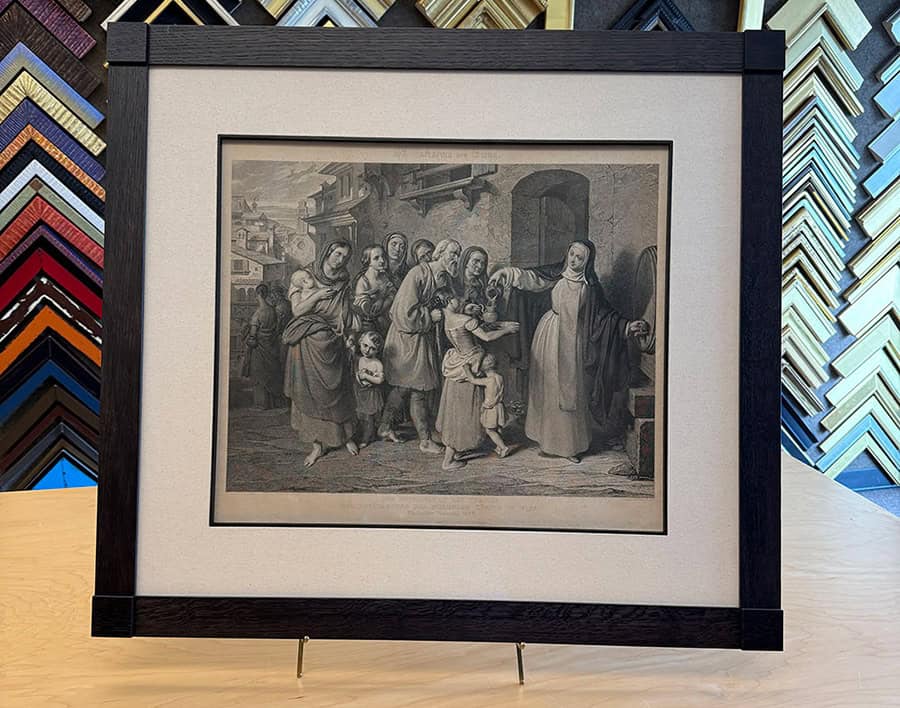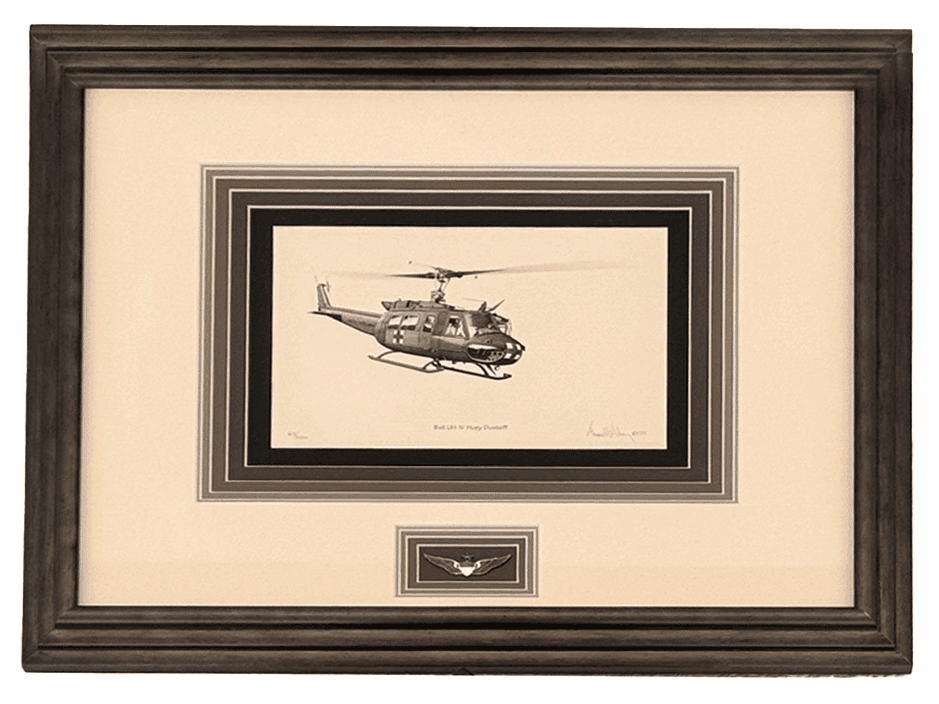Anatomy of a Custom Frame: Understanding Each Part

When you think of a custom frame, the first things that come to mind are usually the frame and the artwork itself. However, a beautifully framed piece is much more than that. Custom framing is the result of several carefully chosen components working together. At Capricorn Framing, we know that the details you may never notice at first glance—like fillets, spacers, and glazing—are what ensure your artwork looks stunning and stays protected for years to come. Let’s take a closer look at the anatomy of a frame.
The Custom Frame: A Foundation and First Impression
The outer moulding, simply called the frame, is the part most people notice right away. It establishes the visual boundary of your artwork, setting the tone for how it’s experienced. From sleek, minimalist designs that complement contemporary art to ornate, gilded mouldings that highlight traditional pieces, the frame itself is where style and personality shine.
A frame is more than decorative—it’s structural. The moulding provides the strength that holds the entire framing package together. A carefully chosen frame not only enhances the artwork but also ensures stability, keeping mats, glazing, and backing properly aligned and secure. Without the right foundation, the rest of the framing elements can’t do their job effectively.
The value of working with custom framers lies in knowing your artwork will be given a strong foundation while being beautifully styled to enhance and complement the piece itself.
Fillets: The Hidden Accent

A fillet is a small, decorative moulding placed inside the frame or mat to add depth and a touch of elegance. Think of it as jewelry for your artwork—a subtle detail that draws the eye inward and highlights the piece without overwhelming it. Fillets can be metallic, wood-toned, or painted to complement both the artwork and the outer frame.
Fillets can also be used along the inner edge of a frame itself, where they serve as a subtle yet effective accent that draws the eye inward and adds a sense of depth and structure. This application helps bridge the transition between the frame and the artwork, creating a layered, finished look.
Spacers: Breathing Room for Your Art
Spacers are invisible heroes in custom framing. They create a small gap between the glass and the surface of your artwork, ensuring that delicate materials like photographs, watercolors, or pastels don’t stick to the glazing over time. Spacers also allow for creative depth, making three-dimensional objects or layered pieces feel more dynamic.
Glazing: More Than Just Glass
While many people think of glazing as simply "glass," there are actually several options to choose from, each with its own purpose. Regular glass, non-glare glass, and UV-protective glass all serve different needs. For high-value artwork, museum glass offers crystal clarity and the highest protection against fading.
Acrylic glazing is a lightweight, shatter-resistant option, especially useful for oversized pieces or in homes with children and pets. At Capricorn Framing, we opt for Optium Museum Acrylic® by Tru Vue, which is trusted by the world’s most renowned museums.
Matting: The Stage for Your Art

Though often thought of as purely decorative, matting also serves a protective function. It prevents the artwork from touching the glazing, while offering endless opportunities to enhance the aesthetic through color, texture, and layering. Matboards can be simple and neutral or bold and dramatic, depending on the effect you want.
At Capricorn Framing, we use only conservation-grade (alpha-cellulose) and archival (100% cotton rag) mats. These acid-free materials ensure they won’t yellow or cause "burning" over time, unlike cheaper paper mats. Cotton rag mats, in particular, are naturally acid- and lignin free and have been trusted by museums for generations.
Backing & Sealing: The Final Layer of Care
The backing of a frame provides structural support and protects your piece from dust, humidity, and environmental changes. A properly sealed frame ensures that your artwork remains safe from damage caused by moisture or pests, making it as important as the parts you can see.
In addition to protection, high-quality backing materials are acid-free, preventing deterioration over time. Professional custom framers use archival foam boards or specialty boards designed to keep artwork stable and safe. When combined with a careful dust seal on the back of the frame, these finishing touches ensure your piece will stay as beautiful decades from now as the day it was framed.
The Sum of All Parts

When all these details—fillets, spacers, glazing, matting, and backing—come together, they form a complete framing solution that balances aesthetics and preservation. Each decision contributes not only to how your piece looks on the wall, but also to how well it will stand the test of time.
At Capricorn Framing, we take pride in guiding our clients through these often-overlooked choices. When you understand the anatomy of a frame, you realize that custom framing isn’t just about making art look nice—it’s about honoring and protecting something that matters.